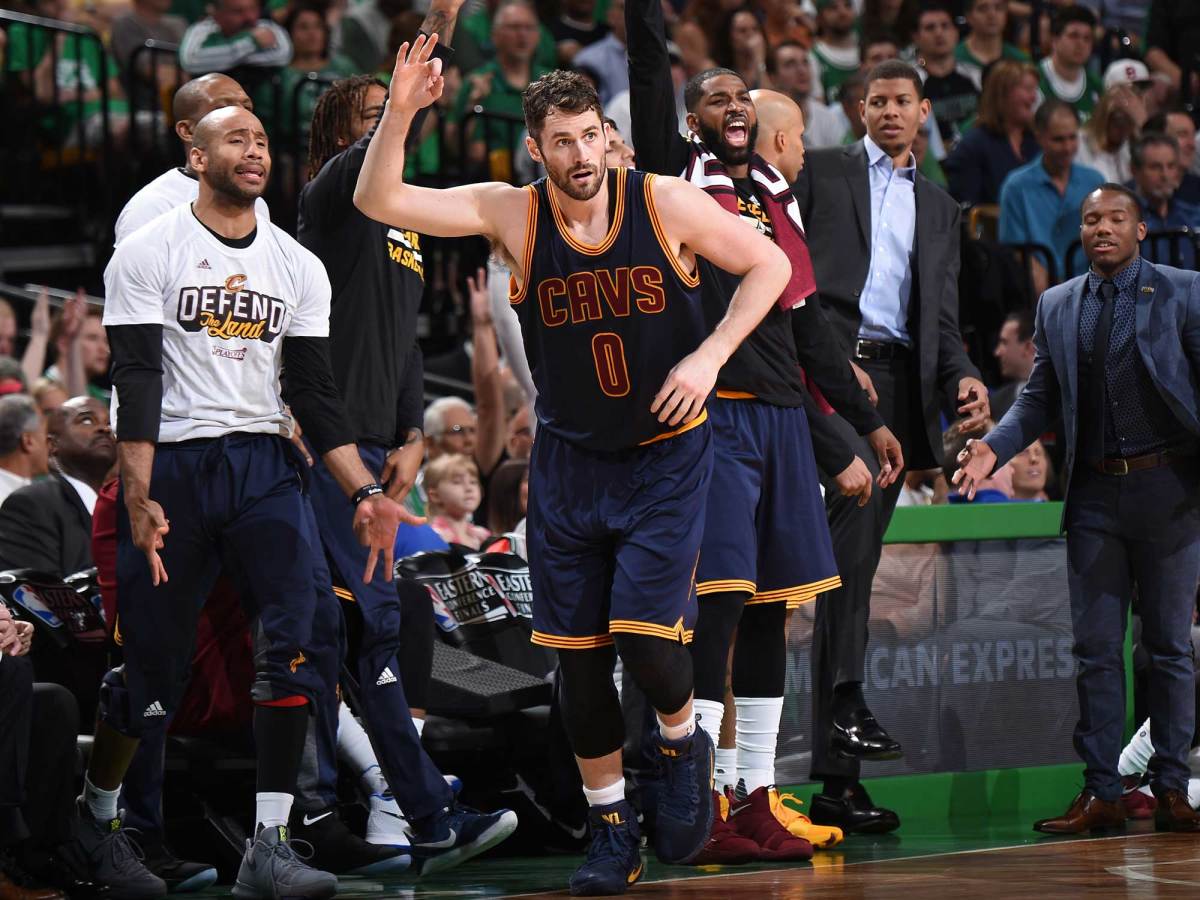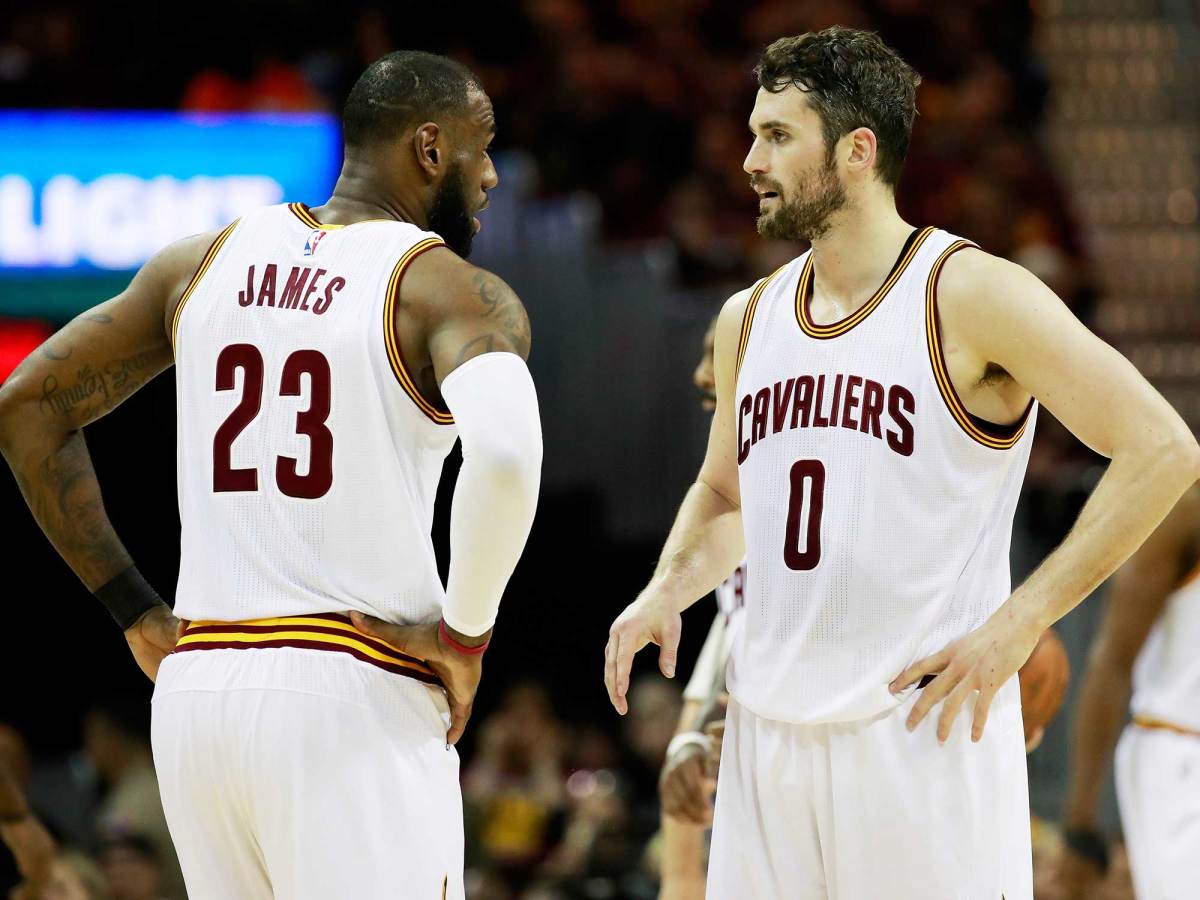The Luxury Of Love: Cleveland's Not-So-Secret Playoff Weapon

The Eastern Conference finals have showcased the complete Kevin Love—or at least the closest that Cleveland’s circumstances will allow. There obviously isn’t need for Love to flex his offensive game to its fullest on a team with LeBron James and Kyrie Irving. Yet some of what separates the Cavs is that they have a player as versatile as Love where a limited role player might otherwise be. What for most teams would be a face-up stretch four is instead a face-up stretch four who can make plays out of the post. Where other teams might have to play small to get the same caliber of three-point shooting, Love can knock down his shots (47.9% on threes in these playoffs) while still offering the defensive and rebounding value of playing a second true big.
Cleveland can win with Love stationed on the perimeter to simply tug at an opponent’s defensive rotations. Toronto, for one, couldn’t extend its series against the Cavs beyond the bare minimum despite Love operating on the periphery. James and Irving are so dynamic—and the spacing around them is so reliable—that even that basic formula can be overwhelming. But Love, when the Cavs look to him, can help meet playoff demands for mid-series flexibility. Whatever plans opponents have for containing James and Irving, the variety of spots in which Love can be deployed might challenge them.
The Curse Of LeBron James: It All Looks So Easy
Even accounting for Love at the three-point line in this series has proven to be too much for the Celtics. The focus on James and Irving is natural prioritization. That it has left Love so open as to take almost half his shots in this series uncontested, per NBA.com, is endemic to the matchup. Dedicating the manpower necessary to stop James or Irving in the pick-and-roll (or worse: both at once) forces sacrifices. Love’s knockdown shooting in this series has made them punishing. In some sense, the best thing Love can do is to give the opposing defense’s best-laid plans a hard penalty. When the Celtics know that Love is shooting this well, they are forced to rotate and scramble through doubt. If they switch a small over to defend Love, they have to now consider that the Cavs will actively go to him to exploit the matchup. A successful, diversified Love gives every defender on the floor more to think about. Even when they aren’t guarding him directly, Love forces opponents to plot out their responses to a possible breakdown—the root of paralysis by analysis.

It is impossible to watch Love in this series without extrapolating beyond it. Whenever he muscles his way into effort rebounds against small-ball lineups, it conjures a parallel with the Warriors. Every time the Celtics check Love with a wing, there are flashes of Andre Iguodala and Matt Barnes. Love made one of the most consequential plays down the stretch of Game 7 in last year’s Finals, yet his shining moment obscured what had been a largely ineffective series. Love entered the NBA’s concussion protocol after Game 2 (missing Game 3 entirely) and never found a comfortable role. While operating at that level, Love proved largely interchangeable with a then-35-year-old Richard Jefferson. He scored 51 total points in six games while shooting 36.2% from the field (In contrast, Love has scored 60 points in four Eastern Conference finals games this year on threes alone). In an essential Game 6, Love played just 12 minutes.

Topping the Warriors again will require more of him. Kevin Durant presents an entirely different sort of threat—the kind that will likely require Love to spend more time in vulnerable defensive matchups. Can Love check Draymond Green when doing so makes him a target in the pick-and-roll? Will his help defense against the Warriors match his focused, diligent efforts against the Celtics? When Golden State’s rotations inevitably take away some of Love’s open shots, how much will Cavs coach Tyronn Lue invest in finding him other opportunities? Love is the most easily muted of Cleveland’s stars, in part because a LeBron-led offense can generally find another way. What has made Love so effective throughout this series against Boston is that Lue has made it a point to consider him. When his pick-and-pop game isn’t featured, he’s allowed to chip in as a playmaker. When it’s not seven made threes, it’s five assists. Love has been a net positive in every game because there is always some means for him to contribute—provided he’s allowed involvement. Many things Love has to do for himself (his 17 rebounds in Game 4, for example, were not much of a function of scheme), but the underlying rhythm of every player’s game typically boils down to how he’s being utilized.
NBA Mock Draft 4.0: Fultz, Ball, And Then What?
Love has both been allowed to do more and has more completely fulfilled his team’s needs. This is a good omen; there is nothing quite like playing the Warriors, yet a fruitful matchup with the Celtics at least works some of the same muscles. The off-ball tracking, the layers of offense, the nuances of small ball—there are applications from one series to the next, even if the personnel will be dramatically different. What’s needed of Love will change with those specifics, and so will the series’ dynamic. To this point, the Cavs have dictated the terms of every series they’ve played in. Love was a chess piece leveraged as part of a constant offensive. Come the Finals, Cleveland will have to balance the talents of a third star on shakier, less predictable footing. A title defense rests on their equilibrium.
